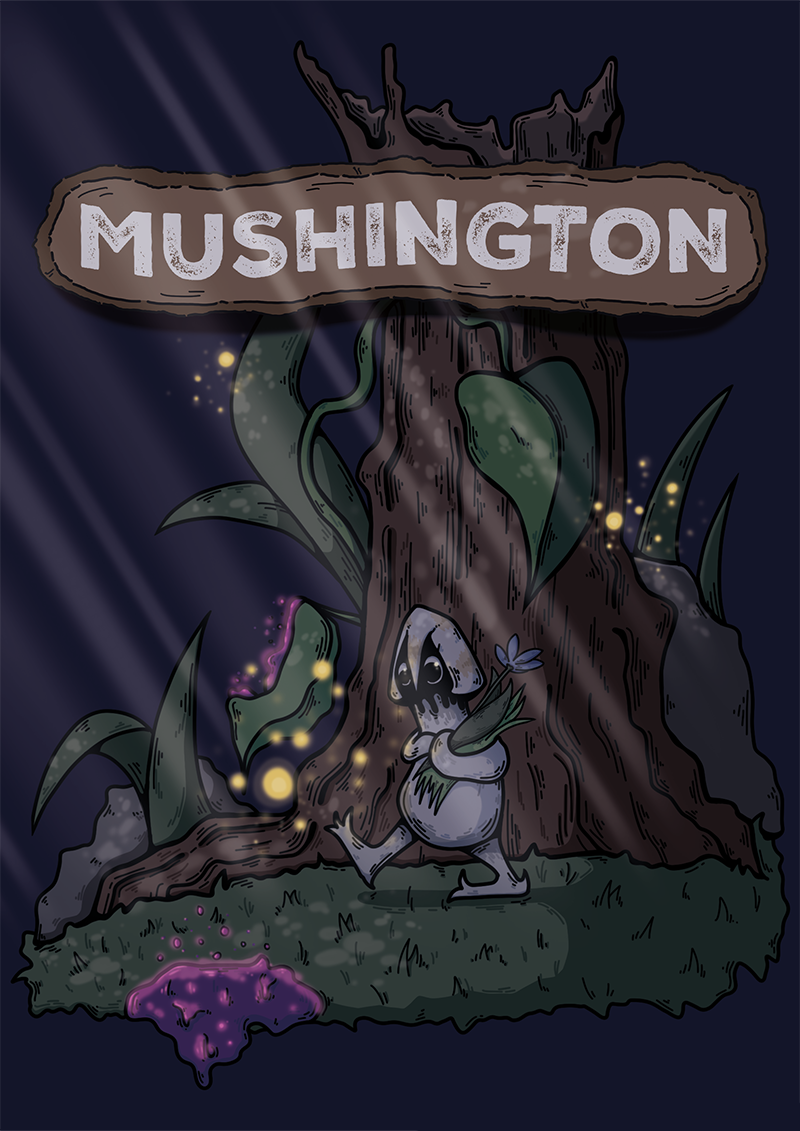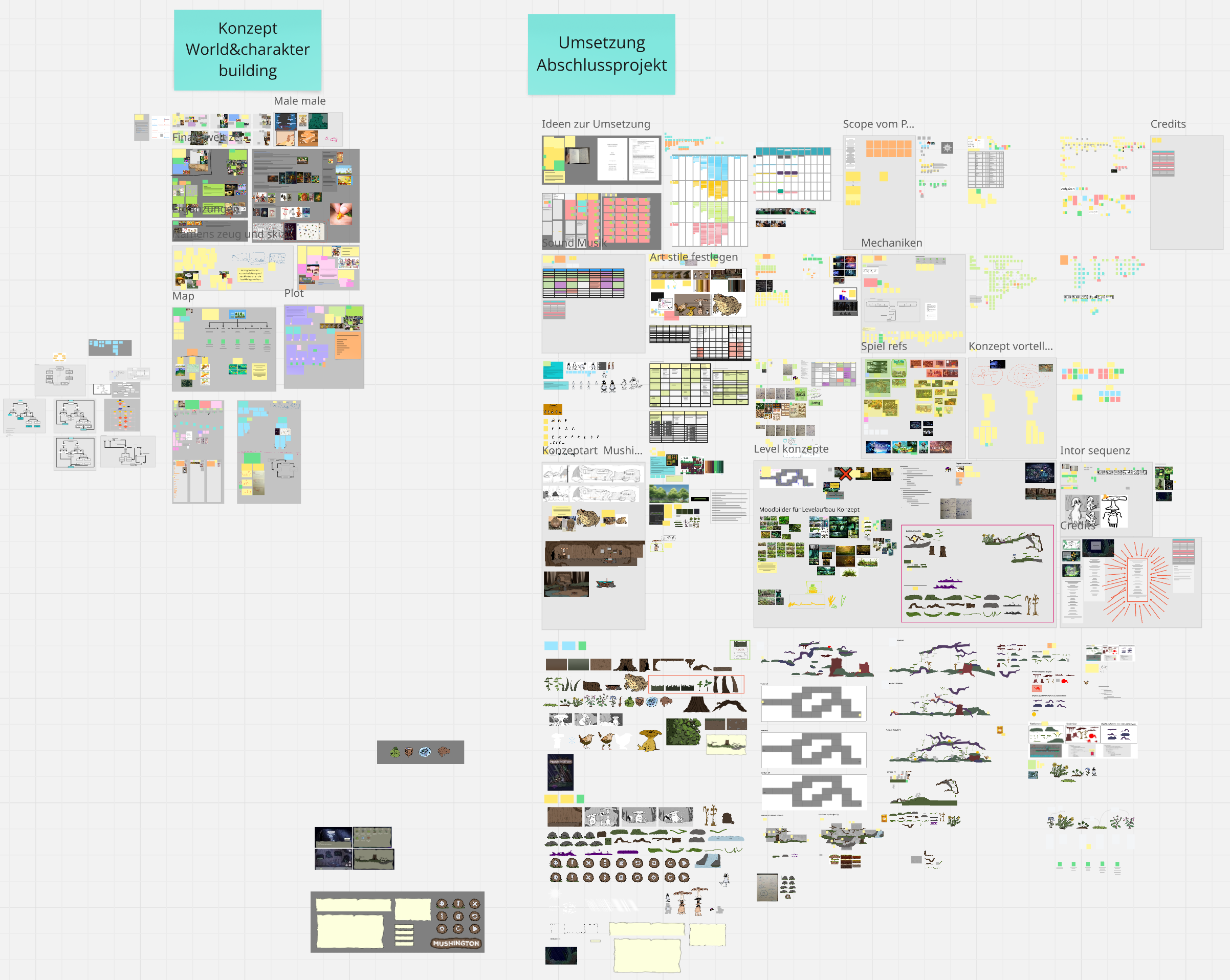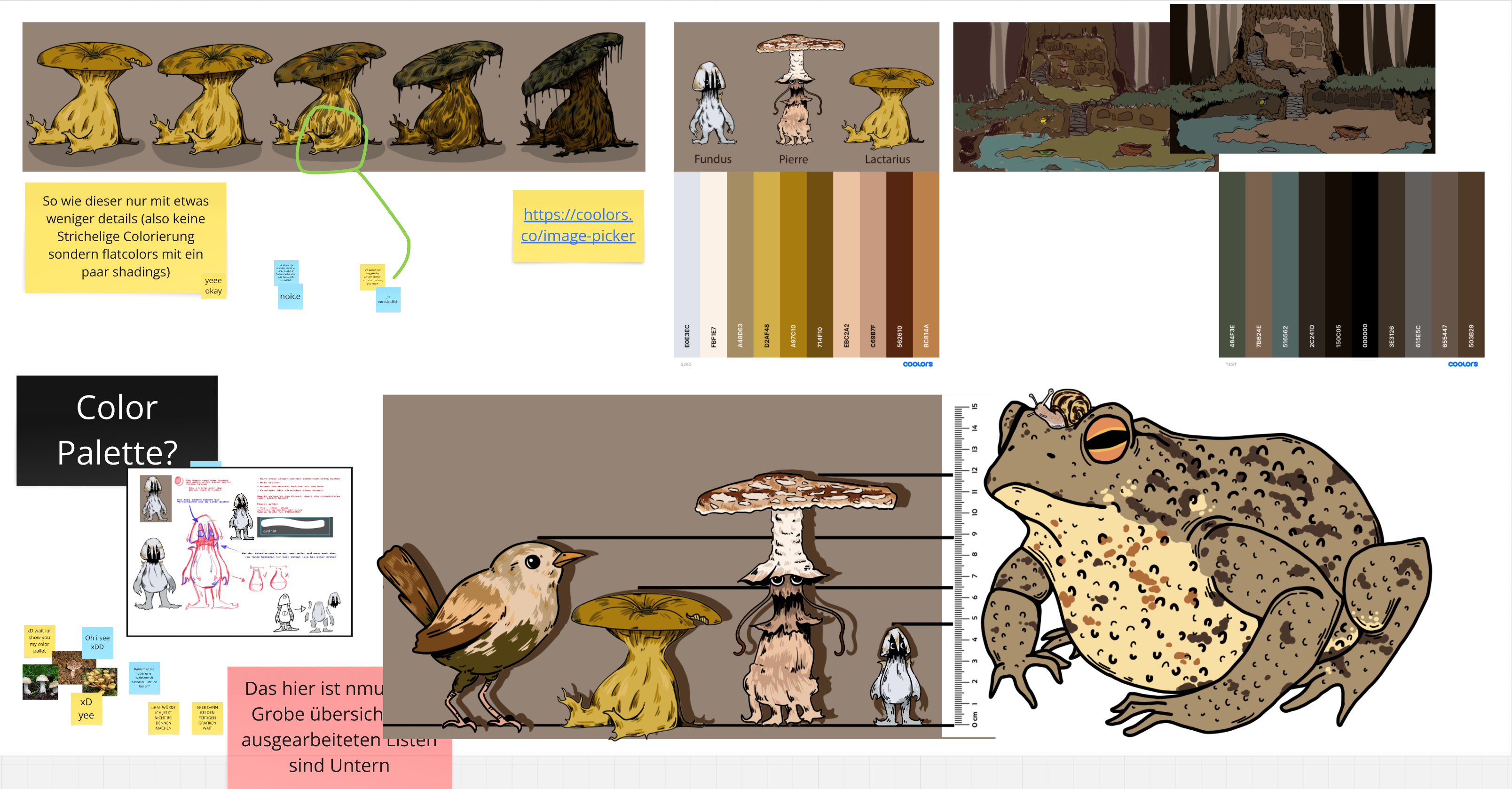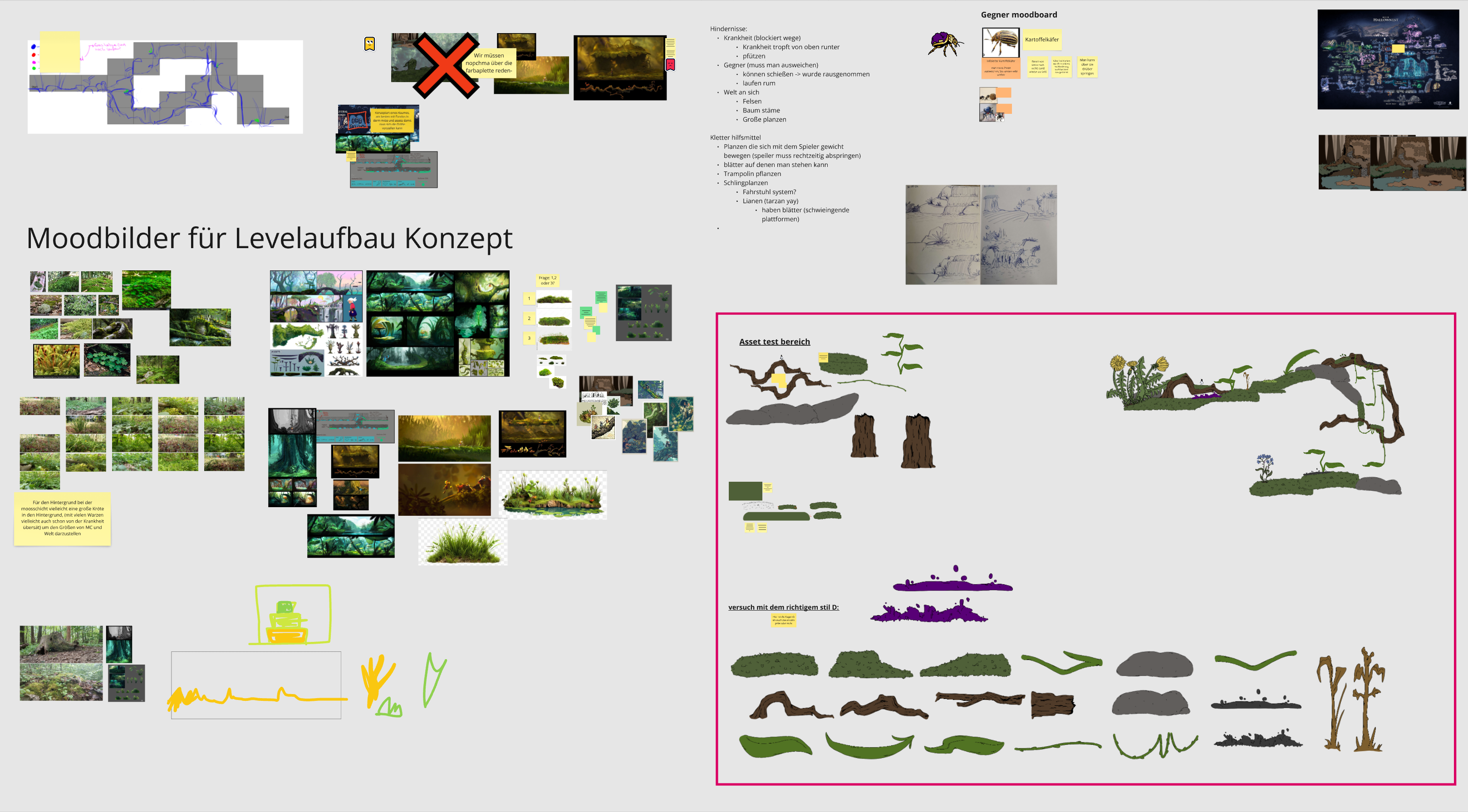Mushington


Mushington was the final project in our Game Design & Development studies. It was completed in addition to a bachelor thesis to finish the studies and gain the titel 'Bachelor of Arts'.
You play as Fundus, one of the inhabitants of Mushington. A mysterious sickness is spreading in the forest and your mentor is already infected. You have to explore the world, collect ingredients and brew potions to eventually find a cure.
You can download the game here (itch.io) - it has received some updates with bug fixes and improvements since the end of the project.
Be aware that the game is only available in german at the moment.
Parts of the general Game Design - The overarching vision for our project including the Game Mechanics Design and World & Character Design was done in the group. Some smaller tasks (like Level or Enemy Design) were split among the members.
Engine Operation, including Programming & Scripting and Technical Art - Most of the scripts for the game logic were programmed entirely by me, with the movement system being the main exception. I was responsible for implementing the systems that other members of the team could use to build levels and other parts of the game. For that purpose I also created a scripting documentation. Another one of my responsabilities was to establish the asset implementation pipeline and build out more complex visual effects like Shaders as part of my Technical Art task.
My biggest learnings in this project relate to the challenge of programming and maintaining coherent game systems. I was also thrilled to take on the Technical Art task but unfortunately the programming part left little time to dive deeper into it. However, I still learned a few things about working with Unity from a Technical Art perspective.
.png)
.png)
.png)
.png)
.png)
.png)
.png)
.png)
.png)
In a group of four people, we decided to build a prototype for a 2D Metroidvania Jump'n'Run game in Unity. We mainly worked on this project for one semester, with almost everything from design to implementation being done in this time frame.
Only a small part of the work was done prior, as a foundation for the rest. We also based the world design of a village of small humanoid mushrooms on a design from a previous semester.
We used Miro for a large portion of our design process, including several creative techniques. To organize the project and the individual tasks we used Trello, as well as Miro - although in smaller portions.
We also created and maintained an in-depth documentation for the project, including a Process Documentation, a GDD, an Art Bible and a Scripting Documentation.


